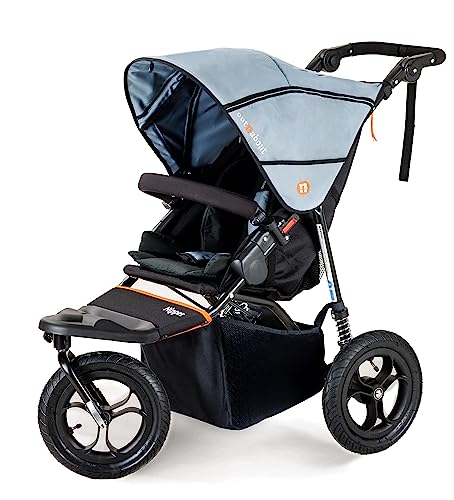This company has no active jobs
0 Review
Rate This Company ( No reviews yet )
About Us
20 Resources To Make You More Effective At Pushchair And Pram
Understanding Pushchairs and Prams: A Comprehensive Guide
When it concerns baby movement, the terms “pushchair” and “pram” are typically used interchangeably. However, they represent distinct types of baby carriers, each crafted for specific phases of a kid’s advancement and varied parental requirements. This article looks into the critical distinctions in between pushchairs and prams, their features, types, and considerations for new parents.
What is a Pushchair?
A pushchair, typically called a stroller in some areas, is created for kids who can sit up separately. Typically, pushchairs are modern-day, lightweight, and have a seat that can be reclined for included comfort. They may also include a five-point harness to guarantee the child’s security while on the go.

Key Features of Pushchairs
- Lightweight Design: Most pushchairs are made from lighter products, making them simple to maneuver and transport.
- Adjustable Seats: Many models offer recline choices, catering to resting or active positions.
- Canopy: Most pushchairs come geared up with a sunshade or canopy to safeguard the kid from sun direct exposure.
- Storage Space: They normally consist of a lower storage basket, best for holding diaper bags or shopping.
Typical Types of Pushchairs
- Requirement Pushchairs: Traditional choices ideal for children who can sit independently.
- Umbrella Strollers: Lightweight, compact, and easy to fold; suitable for taking a trip.
- All-Terrain Strollers: Built with bigger wheels for off-road abilities and smooth rides on varied surface areas.
- Travel Systems: Combines a stroller and an infant safety seat, allowing parents to move their child perfectly.
What is a Pram?
A pram, brief for “perambulator,” is mostly designed for infants, normally from birth till roughly six months. Prams are structured with a flat lying position that supports a newborn’s anatomy, guaranteeing they are cradled effectively.
Key Features of Prams
- Flat Bed Design: Prams have a totally flat bed, which is necessary for young babies who require to lie flat for comfort and health.
- Stylish Aesthetics: Many prams boast vintage or timeless styles, typically seen with elegant fabrics and appealing surfaces.
- Suspension System: Quality prams often include a suspension system to supply a smoother trip over rough terrain.
- Extended Canopy: Extended sun defense and rain covers prevail.
Common Types of Prams
- Timeless Prams: Featuring a standard design, these are typically styled to evoke fond memories.
- Convertible Prams: These can rapidly switch from a pram to a pushchair and normally grow with the child.
- Lightweight Prams: More compact than conventional prams, making them much easier to transport.
Differences Between Pushchairs and Prams
| Function | Pushchair | Pram |
|---|---|---|
| Usage Case | For children who can stay up | For newborns and infants |
| Design | Upright seat with reclining option | Flat bed for resting |
| Weight | Normally lighter | Much heavier due to tough construction |
| Density | Folds easily and compactly | Might be bulkier, depending upon style |
| Age Range | 6 months to 4 years or older | Birth to approximately 6 months |
| Rate Range | More cost effective choices readily available | Frequently more pricey due to materials and style |
Selecting Between a Pushchair and Pram
When selecting between a pushchair and a pram shops near me, several elements call for consideration:
- Age of the Child: Newborns require a pram; older babies and toddlers will be more comfortable in a pushchair.
- Way of life Needs: Parents who travel frequently might prefer lightweight pushchairs, while those trying to find convenience in design may lean towards prams.
- Budget plan: Prams can vary from reasonably to costly; credible pushchairs can cater to budget-conscious buyers.
- Storage Space: Consider how easily the chosen model can suit your automobile trunk or home storage.
Frequently asked questions
Q1: Can I use a pushchair for a newborn baby?
While particular pushchairs are designed with reclining features that may accommodate infants, it is normally recommended to use a pram or specially developed infant safety seat for newborns.
Q2: Are travel systems worth the financial investment?
Travel systems can offer benefit by integrating a safety seat and a stroller. They permit for seamless shift from car to stroller, which numerous parents find vital.
Q3: How do I maintain my pushchair or pram?
Regularly clean the fabric, check for mechanical issues, and lube the wheels. Make certain to follow particular care directions supplied by the maker.
Q4: What is the weight limitation for pushchairs and prams?
Weight limits differ by design: generally, pushchairs accommodate up to 50 pounds, while prams fit babies up to 30 pounds. Always refer to the maker’s standards.
Q5: Is it vital to have a rain cover for my pushchair or pram?
Yes, a rain cover can safeguard your kid from rain and wind, maintaining comfort while avoiding moist clothing.
In summary, pushchairs and prams serve important but distinct roles in the movement landscape for moms and dads and caregivers. Selecting the ideal model depends upon the kid’s age, lifestyle needs, and family choices. By comprehending the qualities, advantages, and distinctions between pushchairs and prams, moms and dads can make educated decisions that make sure convenience and security for their child. Whether strolling through the park or browsing hectic streets, the ideal movement option is out there waiting.

